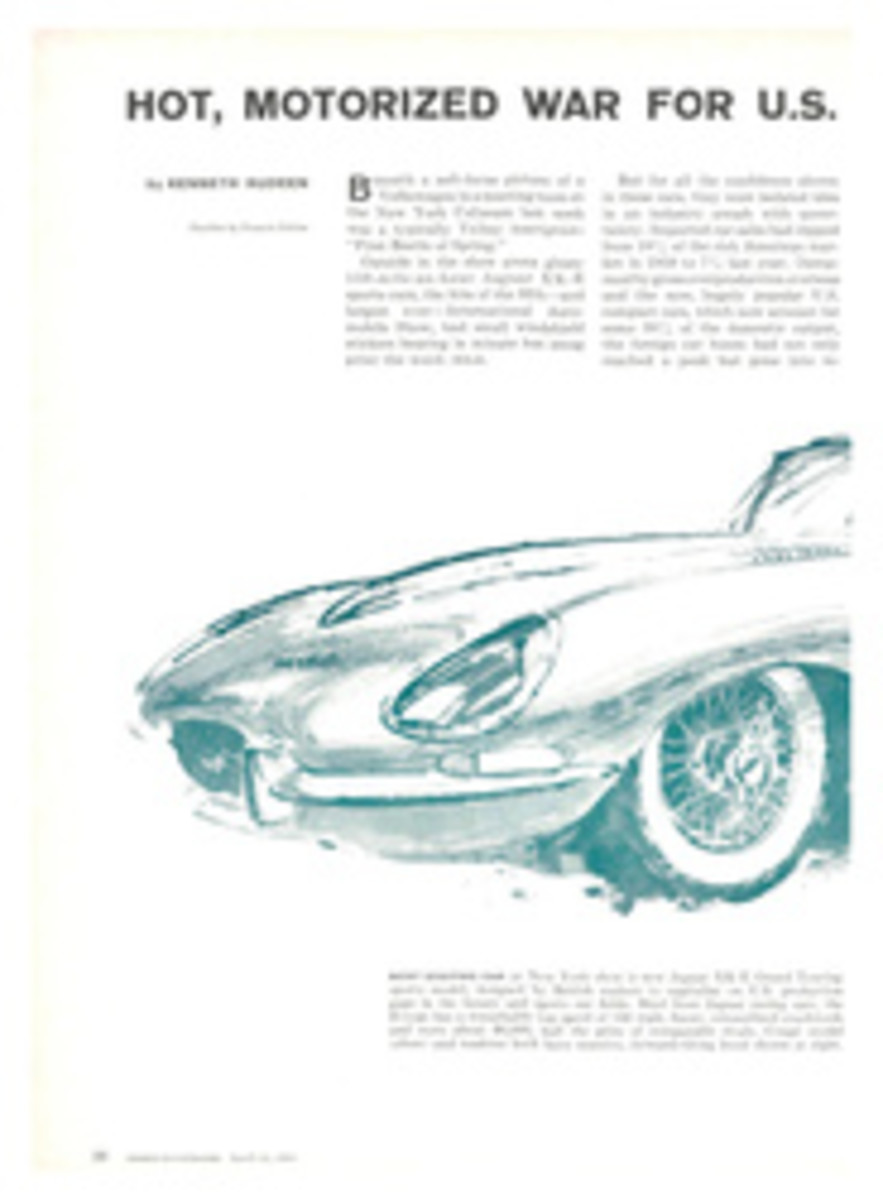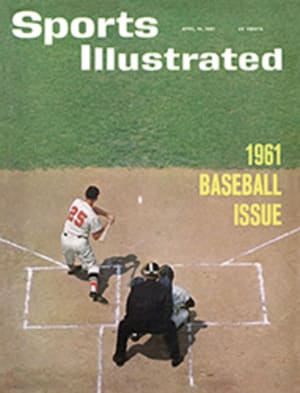
Anyone Too Young for Tennis?
Watching tennis on the courts of Puerto Rico's Caribe Hilton Swimming and Tennis Club these days often gives you the feeling you are looking through the wrong end of a pair of binoculars. The fierce competition before you is generally taking place between pint-size youngsters who are scarcely taller than the rackets they wield, yet in poise, precision and form are miniature copies of polished, adult champions. The reason is that a former champion named Welby Van Horn believes that the ideal age to learn tennis is 8. "The game is so difficult," he says, "that other interests may interfere if you wait until 11 or 12."
After taking a job in Puerto Rico as a teaching pro nine years ago in an effort to ease the chronic asthma that had hampered his own competitive career, Van Horn found a clubful of youngsters eager to learn their lessons early. The discovery gave his own tennis career a new boost. "I am in the third phase of that career now, and it's the one I like best," he says. The first phase, as an amateur, reached its zenith in 1939 when Van Horn played in the finals of the National Men's Singles Championships at Forest Hills, losing to Bobby Riggs, and being ranked No. 4 nationally. During the second phase, as a playing professional in the 1940s, he won both the National Pro Singles Championship and the National Pro Doubles Championship—with Frank Kovacs. At one time or another he played all the greats of his era, developing, in the words of the authoritative World Tennis magazine, "the lovely strokes which characterized him as one of the finest stylists of the game."
Never before, however, had Van Horn shown such dedication to the game of tennis as he does now. Tall, lean, hawk-nosed, crew-cut and deeply tanned, he stands hour after hour on the Caribe courts alongside a supermarket pushcart filled with balls, patiently feeding them across the net to his young protégés, correcting their every stroke, insisting each be finished as perfectly as it is begun. Van Horn is a fanatic on balance, as an essential to position and footwork, as part of sound fore-and backhand strokes. He starts his students on baseline play. "All the delicate shots—lobs, volleys, half volleys, drop shots—can be mastered easily at a later stage if the basic ground strokes have become natural," he says. By 11 the youngster has become more diversified and is impressive in many departments, but Van Horn still holds him to the baseline and emphasizes a defensive style, based on consistency.
"My greatest problem is to explain the pitfalls of the 'big game' to kids," says Van Horn. "Most youngsters become victimized by watching the practitioners of power tennis as played by Gonzales, Hoad, Olmedo and the others. Youngsters see only the end results and don't appreciate the years of training that make the great players defensive giants as well. Above all, I try to instill mental discipline by overcoming the almost irresistible urge to hit a tennis ball too hard. It is essential to refrain from this temptation, to remember always that you 'stroke' a ball over the net—not hit, push, block, smash or drive it. When you 'stroke' you are swinging with thought and applying a sense of feel coming from the finger tips. And you can evaluate each stroke by the feel and the sound. There is more of a similarity between a tennis racket and a stringed musical instrument than just the strings. Anyone can improve his game by listening to the ball as well as watching it.
"It takes five years to make a champion," says Van Horn, and by carefully instilling these basic truths in his youngsters. Van Horn produced an impressive lot of young champions during his first five years on the island. In 1956 Charles (Charlito) Pasarell Jr., playing in Miami's Orange Bowl Championships, reached the singles finals for boys of 13 years and under and, teamed with Jorge De Jesus, became a finalist in the doubles. Next year the boys won both events, and this time two girls, Cindy Golbert and Martita Torros, were runners-up in singles and doubles in two age groups.
Since then Puerto Ricans have captured a total of 42 state, district and sectional Stateside junior tournaments, including three U.S. national boys' titles, and have been awarded 21 national rankings by the USLTA. In 1960 five of Van Horn's boys were listed among the first 24 in the Official Tennis Yearbook's age group of 15 years and under—more national rankings than attained by any other section, including Florida and California. In team play the Puerto Rican midgets in 1958 clobbered Venezuela by 13 matches to 1, and the following year overran a Florida team 9 to 3.
Still others are coming along fast under the San Juan palms. Stanley Pasarell, 12-year-old brother of Charlito, teamed with Alberto Carrero to win the 13-years-and-under boys' doubles in the recent Orange Bowl tournament. They will still be eligible in the same division in '61. In the opinion of Van Horn, Stanley shows a development almost equal to his brother's at the same age. "Tico" Carrero seems to exhibit even more promise. "He has the best stroke production of any kid I've ever taught," says the coach flatly. And there is 11-year-old Ramon Almonte, known as Cholo, and his doubles partner, Antonio Ortiz. Last year they made the finals of the USLTA National Championships for players 11 years old and under. Looking smaller than ball boys at many clubs, these bantams and perhaps a dozen others who have not yet achieved recognition in Stateside tournaments play with the aplomb of masters, driving fiat shots effortlessly from the baseline by the hour, swings perfectly grooved. All it takes is time to ripen in the year-round sunshine and more competitive experience.
More courts needed
What makes the record even more impressive is that the whole program has been achieved on the four courts of the Caribe Club, compared with the hundreds of courts and great variety of competition existing in the big tennis centers. Court availability is so limited, in fact, that new groups of 8-year-olds can begin only every three years, when the 11-years-and-older groups are away playing tournaments. Thus many youngsters never realize their potential—a situation that may be rectified since the Puerto Rican government is now planning to build municipal courts.
Regardless, the protégés of Welby Van Horn will remain the products of careful craftsmanship rather than a production-line schooling system. And the dedication of Welby Van Horn's diminutive charges is as great as their master's. As soon as they are out of school, they streak for the club. In the open patio they do homework, munch hamburgers, toss Yo-yos and play tennis—against each other, against unwary adult visitors, against backstops, against a captive ball held to a sandbag by an elastic string.
Meanwhile, a new crop of 8-year-olds is being seeded, beginning to stroke tossed balls on the far court. They look very small, and a visitor is likely to remember that Puerto Rico is a small island, too.
PHOTO
CHILD'S PLAY is serious to Welby Van Horn, former champion who now teaches tennis.

